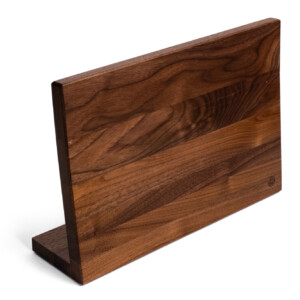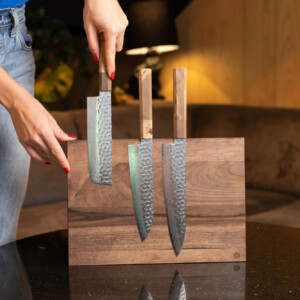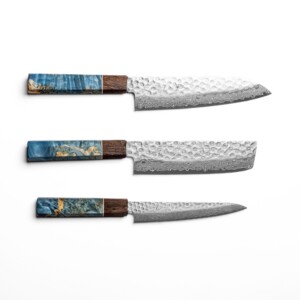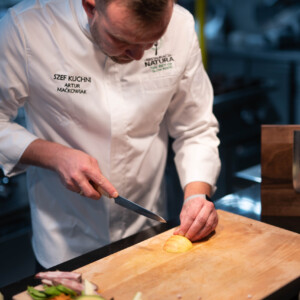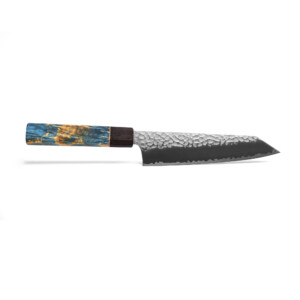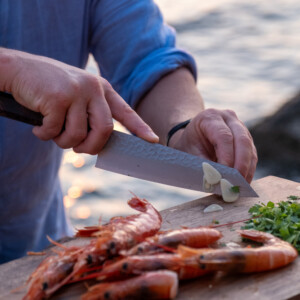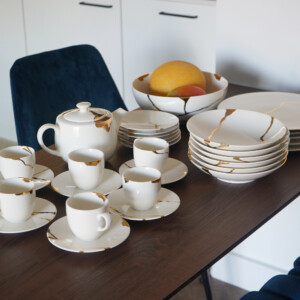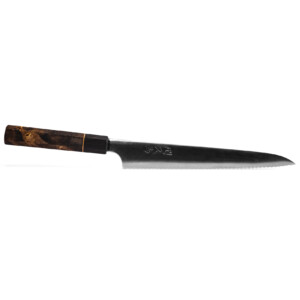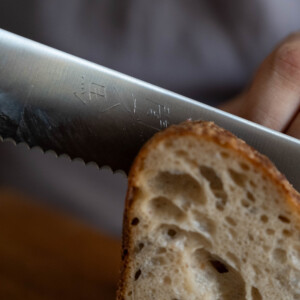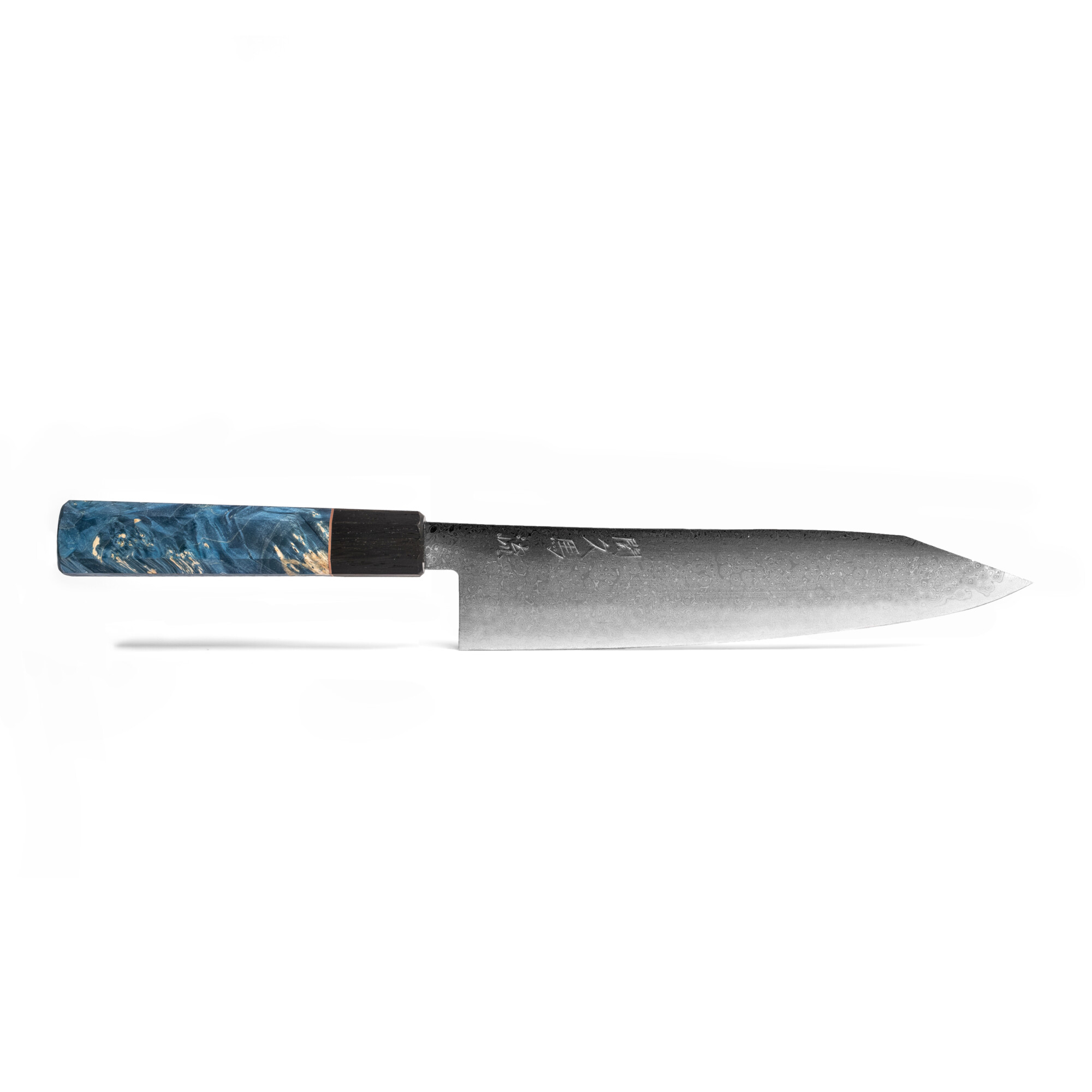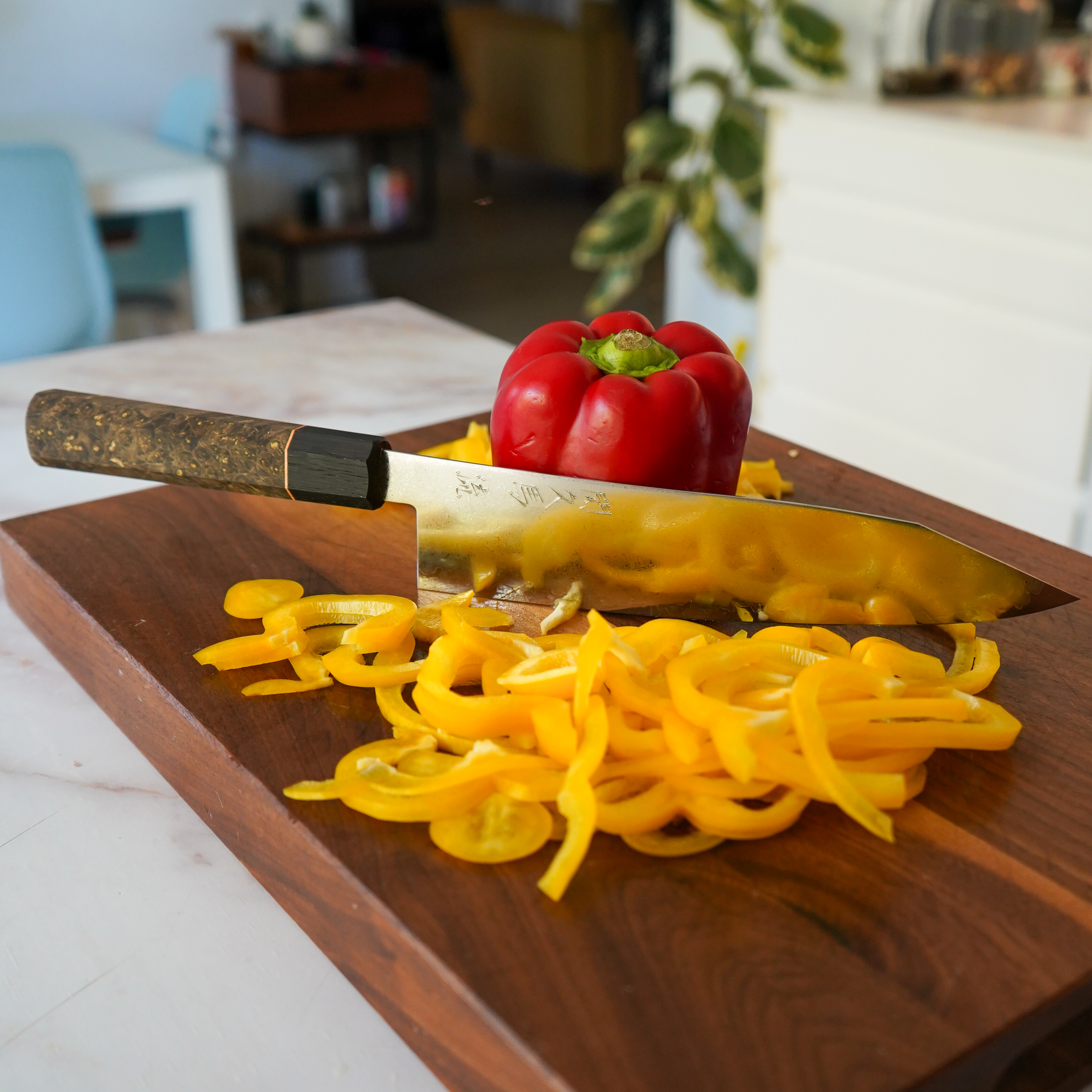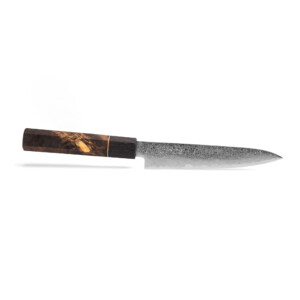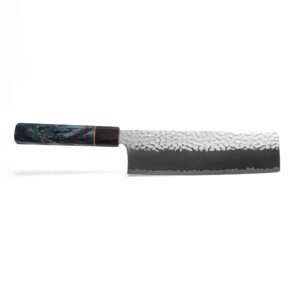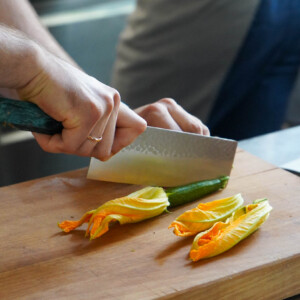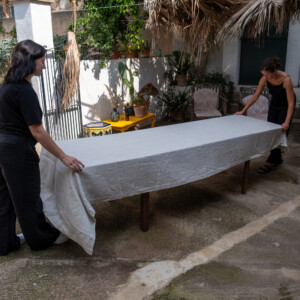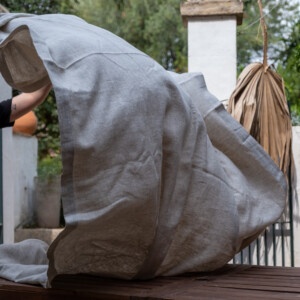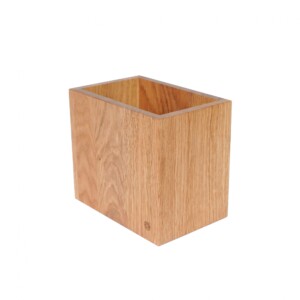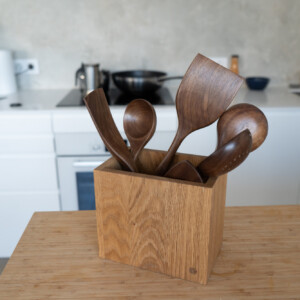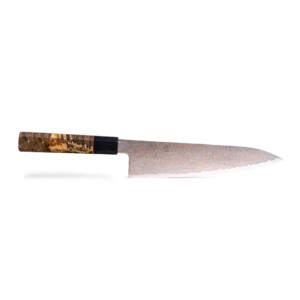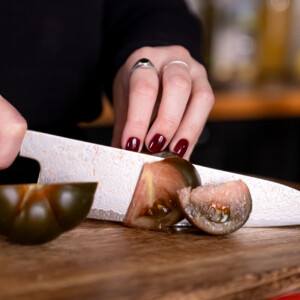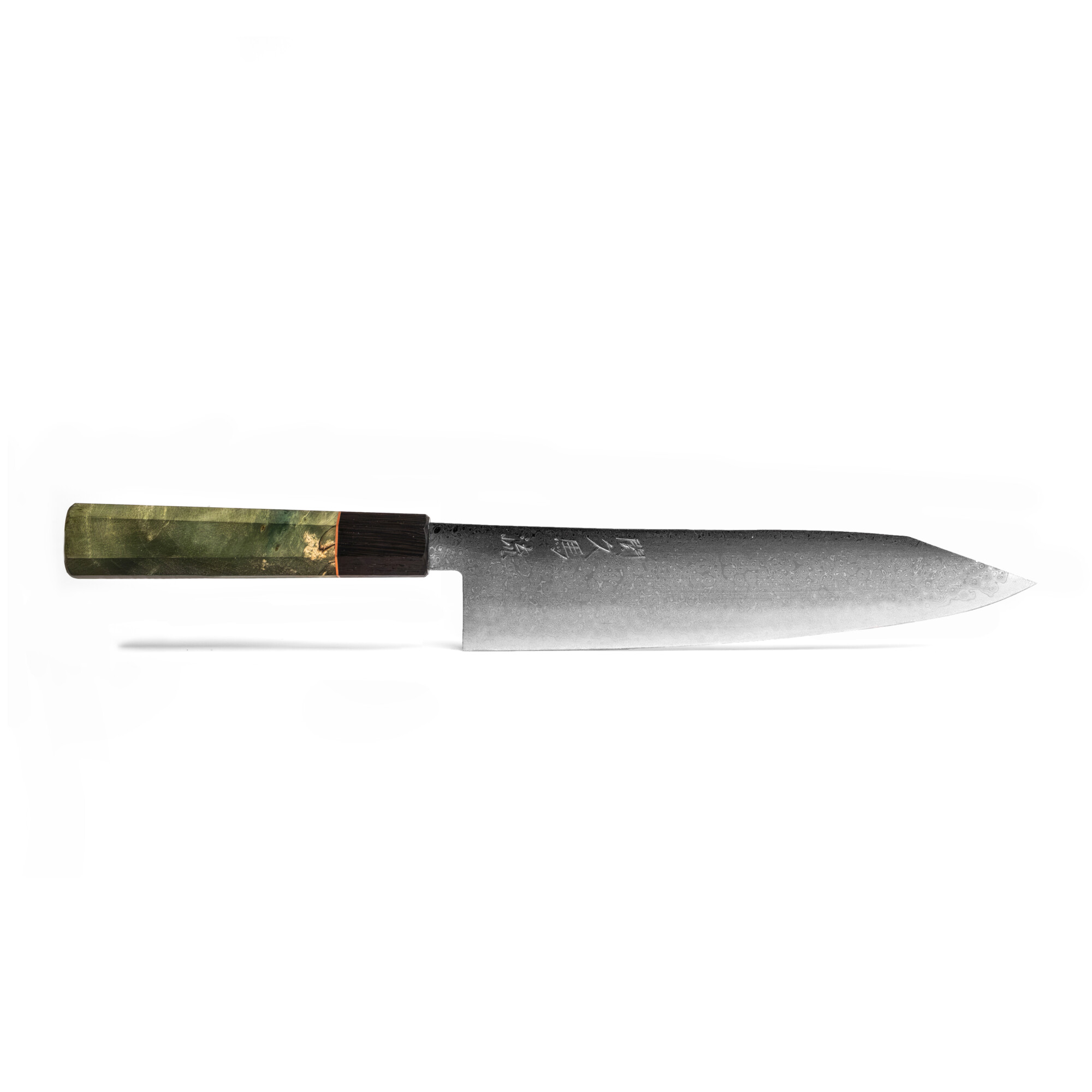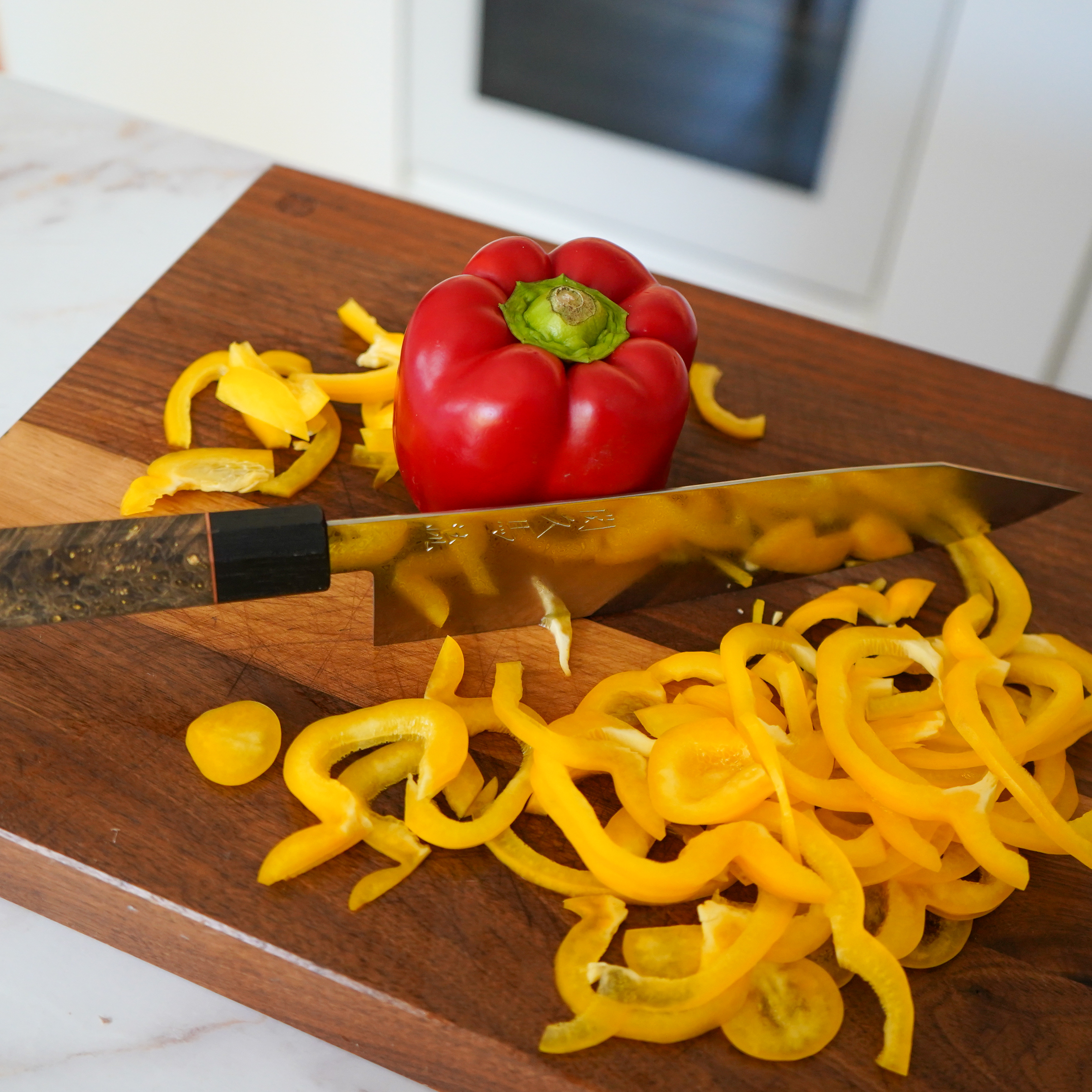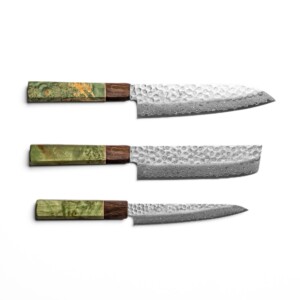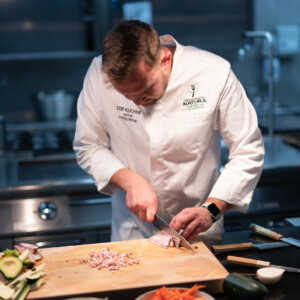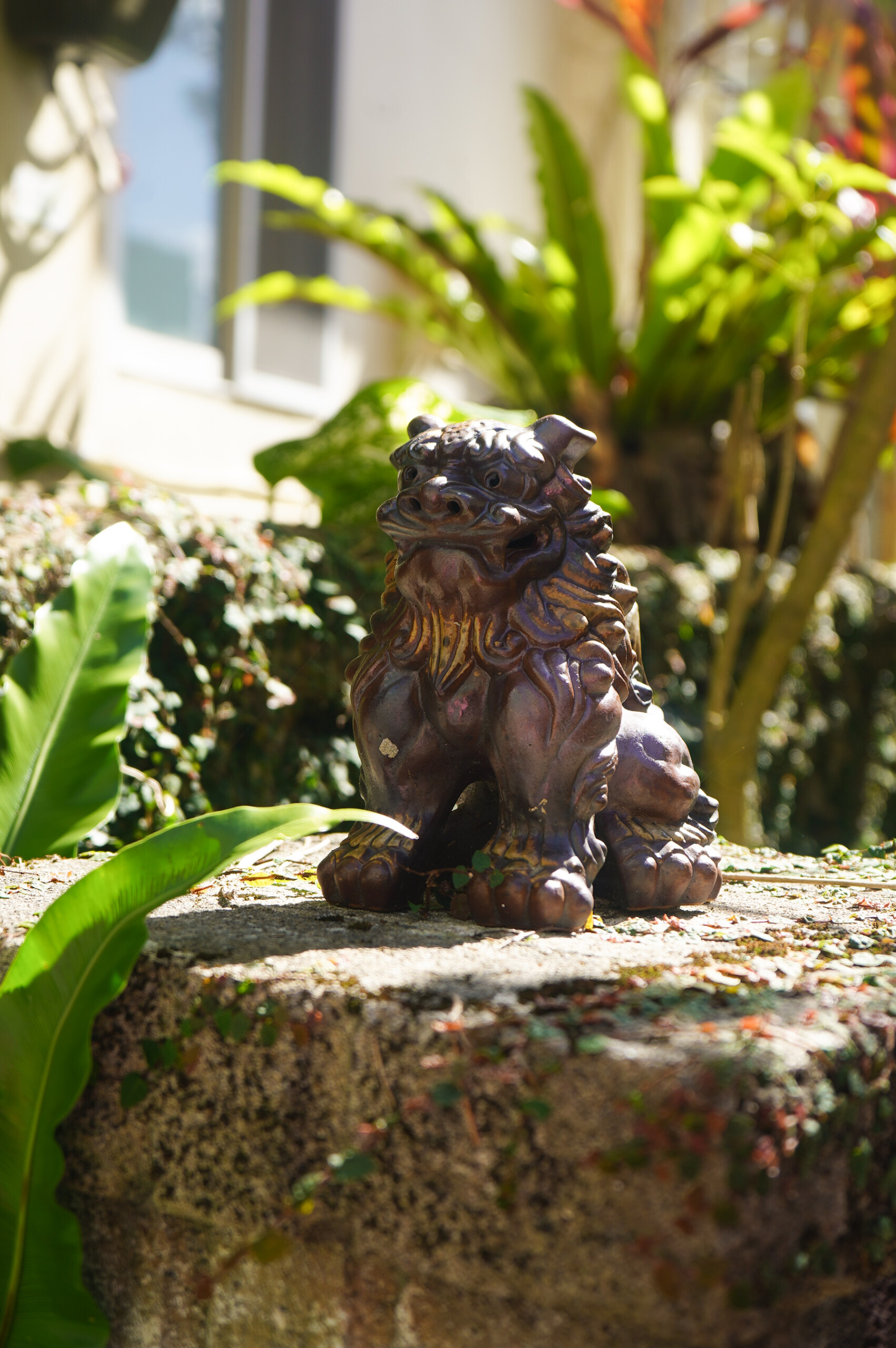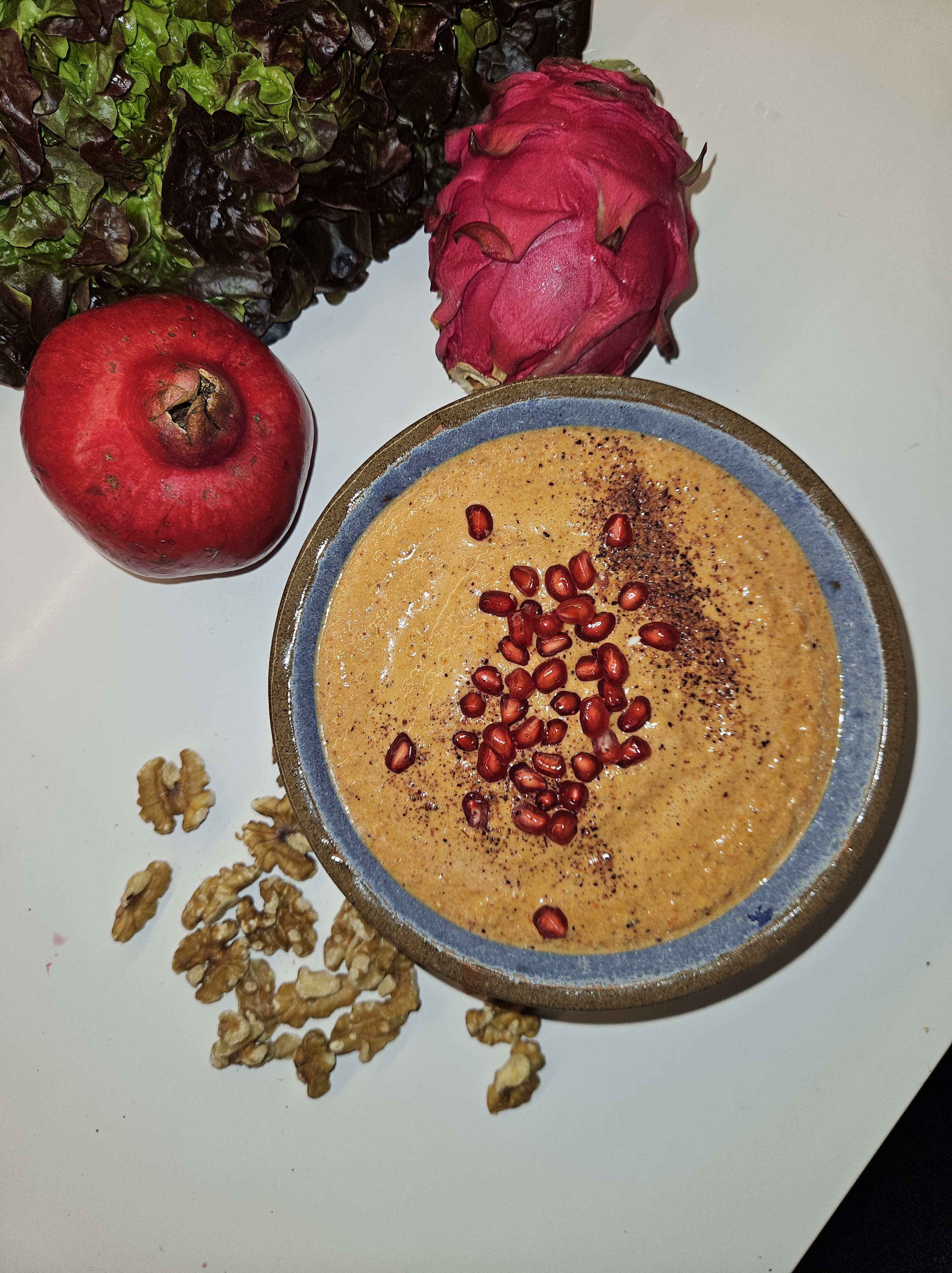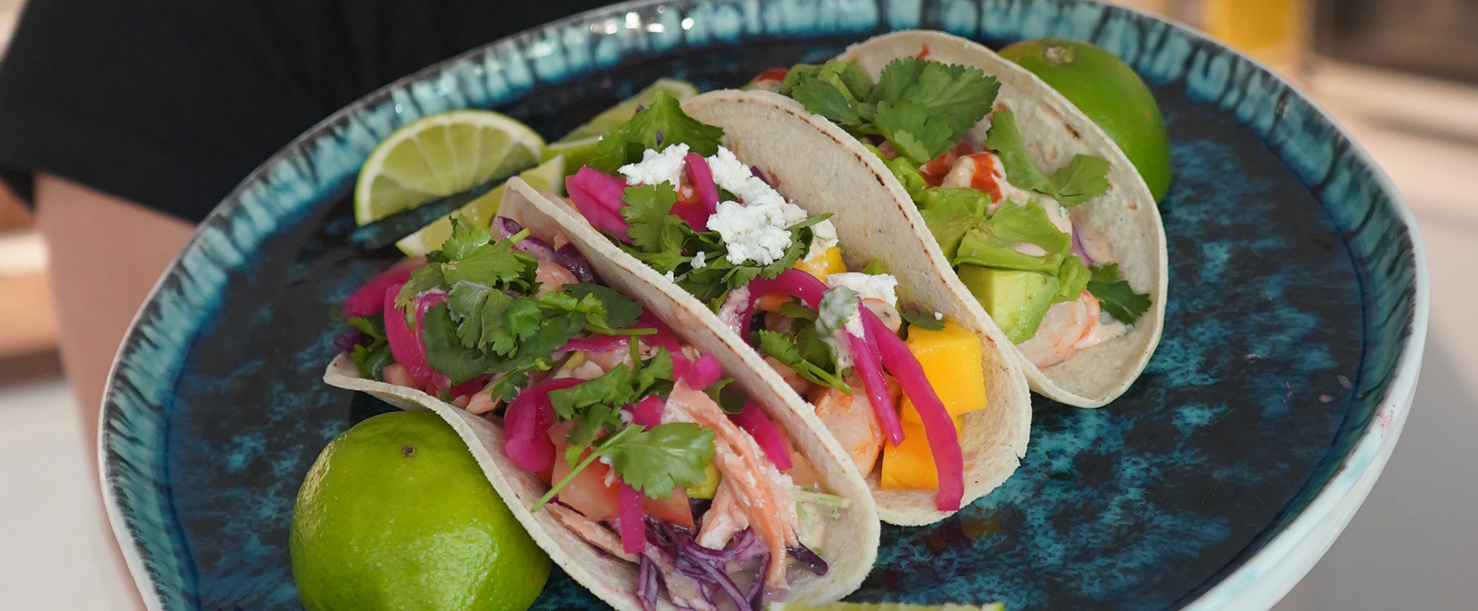As sellers of quality Japanese knives we often get asked how to look after Japanese knives by our customers. We have written various articles on the subject, which you can find in the “Equipment care” section of our Journal. Yet, this time around we asked Chef Olivia Burt to share some tips as to how she takes care of her Sakai Kyuba knife set.
According to Chef Olivia Burt, there are three main ways to look after your Japanese knives. These include: your choice of cutting boards, your storage solution and the way you clean the knives.
Tip 1: Using the right cutting board
In Chef Olivia’s words: You want to have a really nice flat board, to avoid damaging your blade. If it’s not a flat even surface, then it will start wearing away parts of your blade.
Based on this, we recommend wooden cutting boards to all our customers. For more details check out these articles: What wood is best for cutting boards & butcher blocks? and How to Choose the Best Cutting Board?
Since we are on the subject of cutting boards, another thing you must avoid is scrapping the knife, blade down, across your cutting board. This will damage one side of the blade and cause it to go blunt quite quickly.
Tip 2: Proper storage
Another important tip on how to look after your Japanese knives is using the right knife storage. You should avoid keeping your knives in a drawer, they will bump against other things in the drawer and blunt or even worse chip. On top of this, it goes without saying that keeping knives loosely inside a drawer is very dangerous, as one is prone to accidents when grabbing a knife.
Therefore, it’s of utmost importance to look after your Japanese knives by giving every knife a designated storage space. We recommend magnetic knife storage solutions such as a magnetic knife rack or magnetic stand. Check out our article comparing drawers, stands and blocks here.
Tip 3: Avoid dishwashers
We can’t emphasise this enough: never put your knives in the dishwasher! It will damage the blade and can hurt the handle. Chef Olivia Burt recommends washing Japanese knives by hand, with a small quantity of soap and water using a sponge. Make sure to keep away from the end of the blade to avoid accidents. Dry them very well afterwards.
So there you have it, a few tips on how to look after Japanese knives. Always remember, the more you look after them, the better they will perform and the longer they will serve you in the kitchen.
